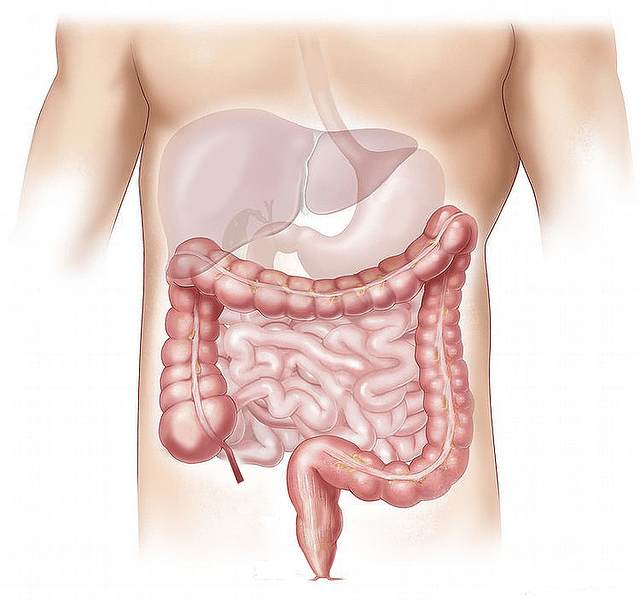I was in a Pilates class a couple of weeks ago when one of the women complained that Whole Foods was out of the organic celery she needed to juice. Another woman suggested that she try Wegman’s, as she usually buys multiple bunches at a time there. After giving them puzzled looks, they explained that they were trying one of the newest fads, celery juicing.

Apparently, Instagram is full of pages extolling the virtues of celery juice: enhancing the immune system, having a powerful antioxidant, restoring the adrenals, flushing the adrenals, cleaning the liver, and preventing gut rot, to name a few.
Where did this fad come from? And is there any scientific evidence to support these claims? Let's start at the very beginning.
Table of Contents
What’s Actually in Celery?
Celery (Apium graveolens) is a marshland plant in the family Apiaceae that has been cultivated as a vegetable since antiquity. Celery has a long, fibrous stalk tapering into leaves.
Depending on where it is grown and which cultivar is used, either its stalks, leaves, or bulbs are eaten and used in cooking. Celery seed is also used as a spice, and its extracts have been used in herbal medicine.
The most common commercial variety in North America is Pascal celery, while in Europe, the variety celeriac (also known as celery root), Apium graveolens var. rapaceum, is also popular.
In Asia, Leaf celery (Chinese celery, Apium graveolens var. secalinum) grows in marshlands. It is most likely the oldest cultivated form of celery.
According to the USDA, 100 gm of celery contains:
- Water 95 gm
- Energy 18 kcal
- Protein 1.18 gm
- Fat 0
- Carbohydrate 3.53 gm
- Fiber 1.2 gm
- Sugar 1.8 gm
- Calcium 40 mg
- Iron 0
- Potassium 260 mg
- Sodium 82 mg
- Vitamin C 3.1 mg
- Carotene, beta 270 µg
- Vitamin A 440 IU
- Lutein + zeaxanthin 283 µg
- Vitamin K 29.3 µg
- Kaempferol 0.2 mg
- Quercetin 0.4 mg
- Apigenin 2.9 mg
Although celery and celery juice have been around for millennia, its current popularity has been attributed to Anthony William. William, self-proclaimed “medical medium” and “originator” of the “Global Celery Juice Movement” has been recommending celery juice since he was a child in 1976.
William, who claims he diagnosed his symptom-free grandmother as having lung cancer when he was four years old (reportedly confirmed by medical testing), says that he was ”born with the unique ability to converse with Spirit of Compassion who provides him with extraordinarily accurate health information that’s often far ahead of its time.”
He is the author of four books, Medical Medium, Life-Changing Foods, Thyroid Healing, and Liver Rescue and has a large following, including well-known celebrities such as Gwyneth Paltrow, Sylvester Stallone, and Robert De Niro, to name a few.
William, who has no formal medical or scientific training, claims that celery juice is a miracle tonic that calms inflammation, especially in patients with autoimmune diseases.
He says that the body’s immune system is not the cause of autoimmune diseases (contrary to the preponderance of scientific evidence that says it is) and that bacteria and viruses, some of which are as yet undiscovered, are the true cause.
Celery juice “starves” the pathogens which cause autoimmune and other mystery chronic illnesses.
He also claims that celery juice balances your body pH, and prevents ammonia permeability (another “major unknown cause of ill health”[1]). If food is not properly digested in the stomach it will rot in your stomach". According to William:
“This gut rot, or putrefaction, creates ammonia gas, which has the ability to float, ghost-like, out of your digestive tract and directly into your bloodstream. It can also cross into organs such as your liver and brain. This is what I call ammonia permeability.
Millions of people walk around with digestive health problems, and one of the contributing factors is ammonia permeability, along with underlying sluggish liver issues.”[1]
There is so much wrong here, I don’t even know where to start. But I’ll try to explain it over the course of this article.
The recommended way to drink celery juice is as follows:
“Every morning, drink roughly 16 ounces of celery juice on an empty stomach. Make sure it’s fresh, plain celery juice with no other ingredients. Celery juice is a medicinal, not a caloric drink, so you’ll still need breakfast afterward to power you through the morning. Simply wait at least 15 minutes after drinking your celery juice before consuming anything else.” [1]
Celery should be rinsed and run through a juicer. An alternative method is chopping and blending it in a high-speed blender until smooth. Strain the mixture and drink immediately. Use organic celery whenever possible (thus the run on celery at Whole Foods).
For the best results, the juice should not be diluted by water, ice or other juice.
If you have an autoimmune disease or chronic illness, William recommends 24-32 oz/day of straight celery juice. It can be divided into two servings so long as there is at least 15-30 minutes before eating your next meal.
Is There Any Research?
In a word, no. There are only a handful of articles in PubMed that specifically mention celery juice. None involve humans subjects. As Dr. Merry says in her healthybutsmart.com article about Celery, there are 1109 articles related to celery in the scientific literature, with only 14 clinical trials.
Compare this to over 3000 publications related to carrots, including over 90 clinical trials.
By the Way… What’s a Cluster Salt?!
An interesting claim by Anthony William is that one property of celery juice that makes it so powerful is that it contains “undiscovered cluster salts.” William explains:
“These subgroups of sodium bond together as one and are infused with celery’s other critical chemical compounds and information that’s highly active in healing the body. Science has not yet deconstructed or studied these cluster salts. Eventually, research will reveal that these cluster salts work symbiotically and systematically to flush out toxins, dead pathogens such as viruses and bacteria, and pathogenic neurotoxins and debris from every crevice of the body.”[1]
I believe one always has to take a health claim with a huge grain of (cluster) salt when its claimer admits that scientists haven’t discovered it yet. If you try to look up a definition of cluster salt or sodium chloride cluster in Google, you really won’t find one (and I thought Google had everything).
The only thing I can find is that sodium salt (like table salt) tends to group itself (i.e. cluster) in water. "Cluster salt" can sometimes show up as a background artifact in liquid chromatography-high resolution mass spectrometry testing—a technique used to analyze biochemical, organic, and inorganic compounds commonly found in complex samples.
Somehow, I don’t think this is what we are talking about here, so let's just call it what it is: pseudoscience.
Does Celery Juice Help with Chronic Illness?
There are no studies that look at the effect of celery juice on chronic illness. That being said, there are some studies that have been done on one small compound, the flavonoid apigenin, in the treatment of autoimmune diseases.
Apigenin is present in celery as well as parsley, onions, oranges, chamomile, maize, rice, tea, wheat sprouts, and some grasses.
A review of these studies by Karisi et al [2] showed that apigenin does have some effect on immune cells and the inflammatory compounds they create in illnesses such as rheumatoid arthritis, diabetes mellitus, lupus, and multiple sclerosis.
However, all the studies to date have been done in vitro (in a test tube) or in animal models. There are no trials in humans.
Bottom Line
There is no evidence at this time that celery juice can help with chronic illnesses.
Does it Improve gut Health?
I could only find two studies that mention celery and/or celery juice and gastrointestinal health. The first, by Al-Howiriny et al [3] looked at the effect of an extract of celery on the ability of indomethacin (an NSAID similar to Advil and Alleve) or an alcohol/salt mixture to cause stomach ulcers in rats.
Rats given either of the above regimens were found to have significant ulcers in their stomachs. Rats treated with either 250 or 500mg/kg of celery extract before ulcer-inducing regimens showed protection of the stomach lining and decreased gastric acid secretions.
It was well tolerated by the rats.
The only human study was from Iran, by Adzimi et al [4]. They looked at 150 patients with functional dyspepsia- a condition characterized by early satiety, fullness or bloating, and stomach pain or burning.
Patients were randomly assigned to groups who received a placebo, the anti-reflux heartburn medication omperprazole, or a combination of celery and Trachyspermum copticom, a traditional herb commonly known as Ajwain, used in the Middle East and India for intestinal and other health disorders.
The patient’s frequency and severity of symptoms were assessed at 4 and 8 weeks of treatment. Those who received the traditional remedy had a significant reduction of symptoms compared to those given placebo, similar to those who had received omperprazole.
The main problem with this study is that researchers did not include groups who received celery or Ajwain as solo treatments. Therefore, one can’t determine what effect the celery component of the folk remedy contributed to the results - especially when Ajwain is typically used for gastrointestinal symptoms.
Bottom Line
There is insufficient evidence to say that celery juice improves gut health.
Is It Good for the Liver?

Once again, there are no human studies that investigate the effect of celery or celery juice on the liver. For a review of some of the few in vitro and animal studies, I would recommend that you first read the liver section of the HealthyButSmart Celery article written by my colleague, Dr. Ceppie Merry.
I also found two additional articles. The first, by Kolarovic et al [5], is a study looking at whether celery juice can change several biochemical parameters induced by exposure of liver or blood to the chemotherapeutic agent doxorubicin.
The parameters included the content of reduced glutathione, activities of catalase, xanthine oxidase, glutathione peroxidase, peroxidase, and lipid peroxidation intensity. Rats were divided into three groups: Control groups who received water, rats who received celery leaf juice and rats who received celery root juice.
Each group was further subdivided- half treated with doxorubicin for two weeks and a half who did not. Three days after the last doxorubicin treatment, all the animals were sacrificed.
A liver homogenate (essentially a liver tissue smoothie) or blood hemolysate (blood whose red cells have been broken up) were obtained from the animals and measured for the above parameters.
Analysis of this data leads them to the conclusion that “celery roots and leaves juices influenced the examined biochemical parameters and showed protective effects when applied with doxorubicin.”
The other article, by Jakovljevic et al [6], looked at the effect of celery and parsley juices on the pharmacodynamic activities of drugs involving cytochrome P450 (CYPs) in their metabolism.
CYPs are proteins/enzymes which may a major role in drug metabolism. Although CYPs are present in most tissues in the body, they are most prominent in the liver.
In this study, the authors investigated the “effect of mice pretreatment with juices of these plants on the hypnotic action of pentobarbital and analgesic action of paracetamol and aminopyrine.
In mice pretreated with celery and parsley juices a prolonged action of pentobarbital with respect to control was observed, the statistical significance is attained only with parsley-pretreated animals.
Both pretreatments increased and prolonged the analgesic action of aminopyrine and paracetamol, pretreatment with parsley being again more effective.”
Bottom Line
There is insufficient evidence in humans to claim that celery juice is beneficial to the liver.
Does It Strengthen Your Bile?

Bile acids are a large family of molecules that have a steroidal structure and are synthesized from cholesterol in the liver and actively secreted along with cholesterol and phospholipids into the bile.
Bile flowing from the liver is concentrated in the gallbladder and, in response to a meal, released into the upper intestine. In the intestines, bile acids act as detergents and help to emulsify fats, aiding in their digestion and absorption.
After participating in digestion in the small bowel, bile acids are almost completely (95%) reabsorbed in the distal ileum and then retaken up from portal blood by the liver (enterohepatic circulation).
Medical professionals do not typically refer to bile as being “strong” or “weak”. There is either enough bile available to perform its digestive functions or there isn’t.
And since we don’t have any human studies on the effect of celery juice on liver function, we can’t say whether it increases that production of bile.
The only paper I could find even remotely related to celery extract and bile is by Tsi and Tan [7]. They treated mice genetically modified to have high cholesterol with celery juice, which caused a significant decrease in their blood cholesterol.
They did not find an increase in cholesterol synthesis in the liver and postulated that the lowered cholesterol level was caused by increased bile acid excretion.
Bottom Line
Once again, there are no human studies that show that celery juice can “strengthen” bile.
Is Celery Juice Safe?
For most people, eating celery as a snack or as an ingredient in a recipe is perfectly fine. It is a good, low-calorie source of vitamins and minerals and other nutrients.
But there are some people who should not eat celery or moderate the amount they eat. For example, people can be allergic to celery or celeriac. A Swiss group lead by Ballmer-Weber [8] confirmed that “celery root is a frequent cause of food allergy in pollen-sensitized patients.”
The most common symptom is oral allergy syndrome (OAS) like that seen in pollen-related food allergies. The key signs of oral allergy syndrome are swelling and itchiness of the lips, mouth, tongue, and throat immediately after eating certain fruits and vegetables, especially when raw.
Cross-reactivity is frequent and termed “birch-mugwort-celery syndrome” or “celery-carrot-mugwort-spice syndrome”. Symptoms are often of the immediate type, ranging from relatively mild reactions to anaphylactic shock. Allergic reactions occur predominantly to raw celery and less frequently to cooked celery.
Response to celery spice is comparable to raw celery.
Others who should avoid or moderate the amount of celery they eat include pregnant women (it can cause uterine contractions), those on thyroid replacement therapy (it can interact with thyroid supplements), in those with bleeding disorders or who are on anticoagulants, and in those with low blood pressure.
Conclusion
Although celery is a good, low-calorie source of vitamins, minerals, and other nutrients, there is no good scientific evidence derived from large scale, placebo-controlled, double-blind studies in humans that prove that it is a miracle elixir that will cure all (or even one thing) that ails you.
And juicing celery removes one of its main benefits - its fiber!
Besides, it takes about 1 bunch of celery to make 16 oz of celery juice. Organic celery costs $3.49/bunch at my local Wegman’s. That’s almost $25/week! You can get the same nutrients by eating a wide variety of fruits and vegetables for a fraction of that cost.

Leave a Reply